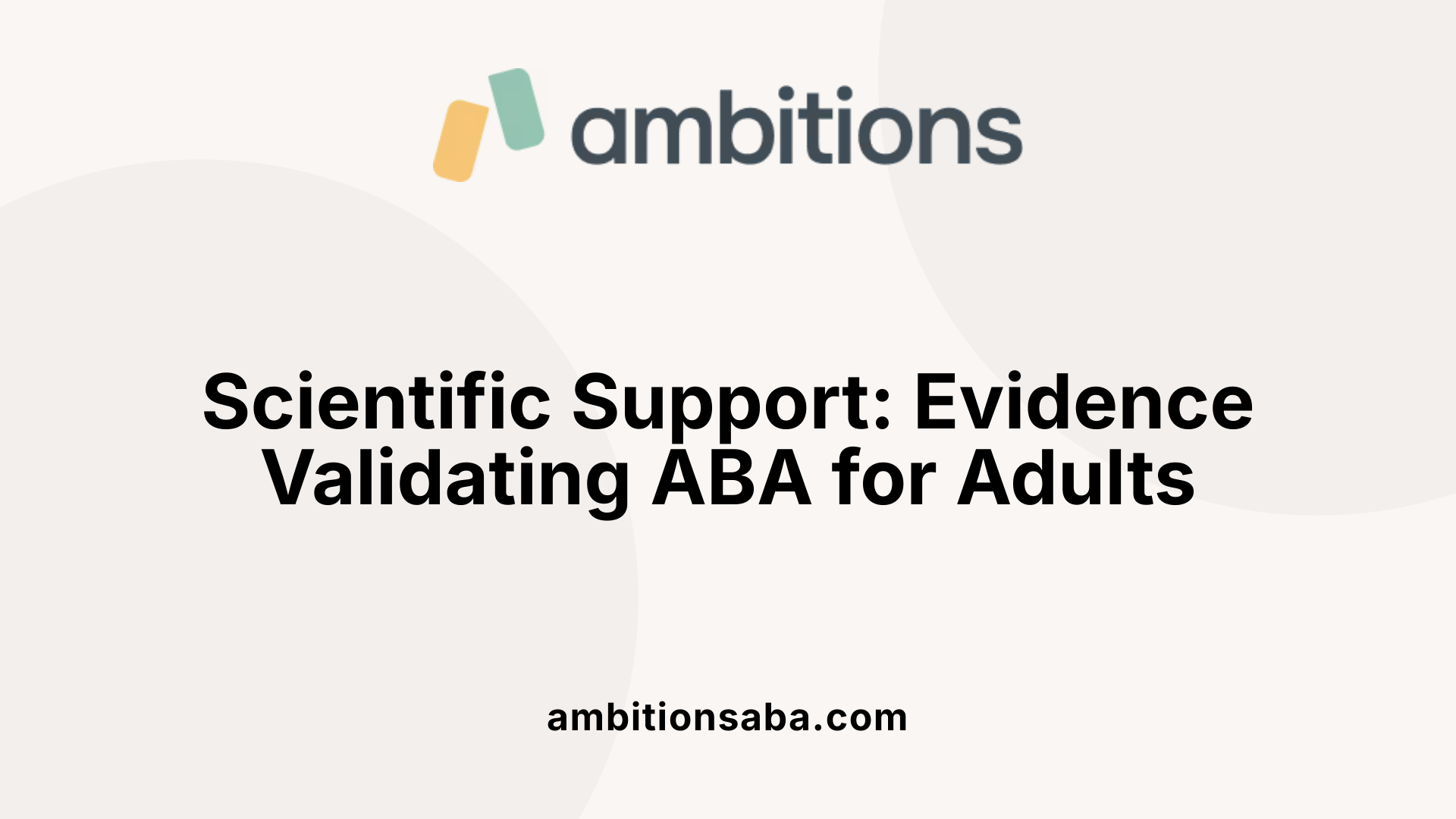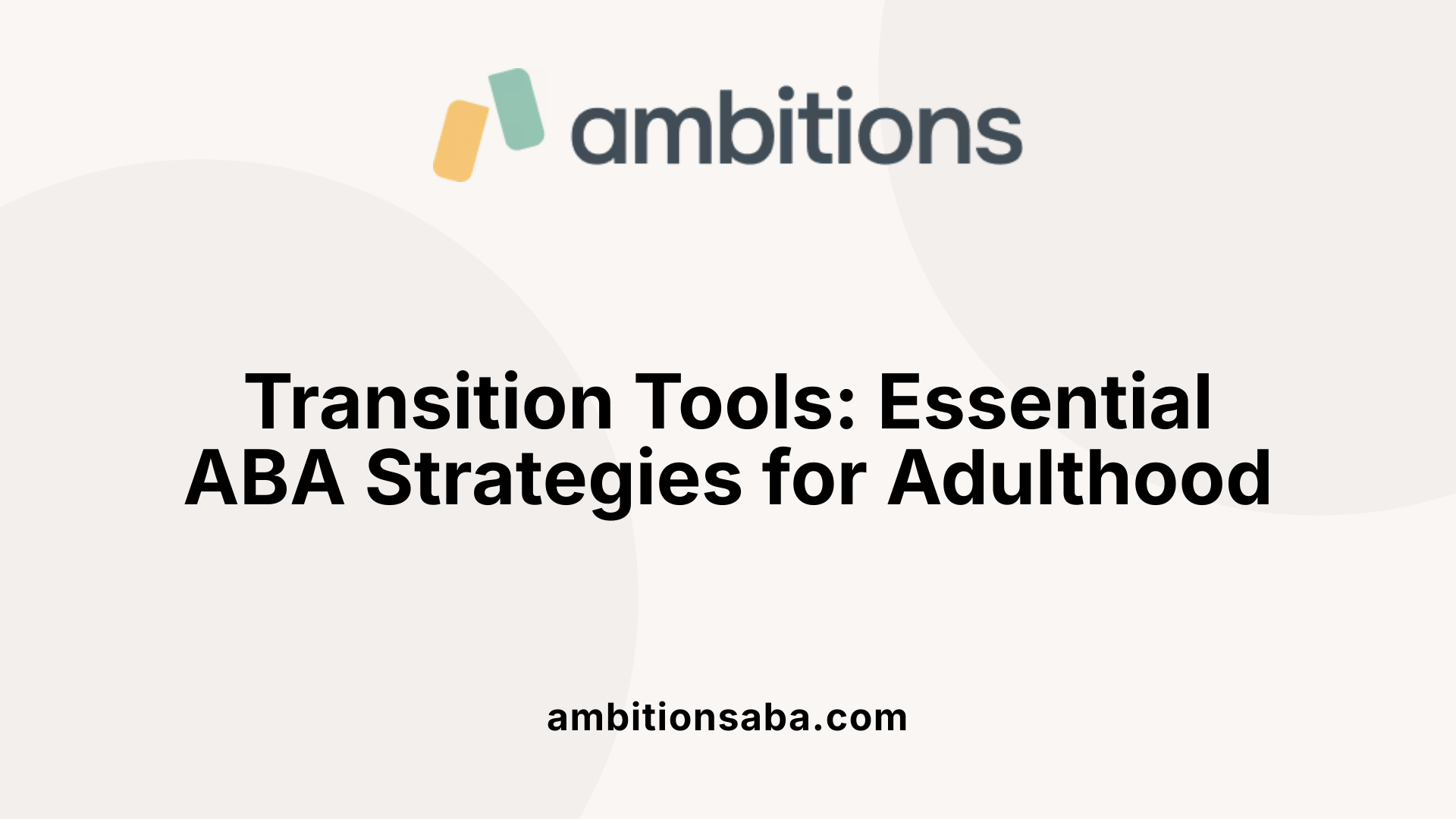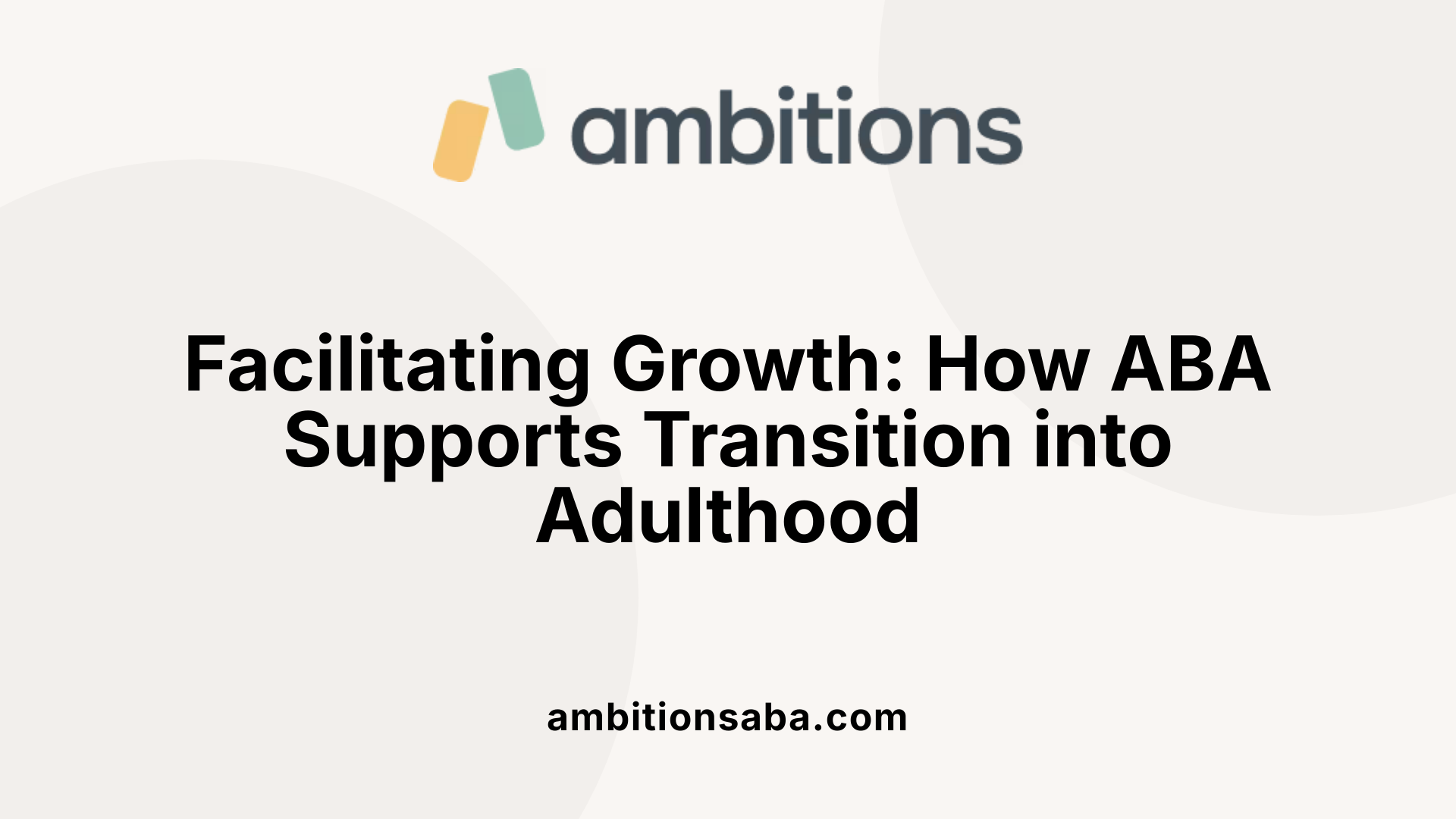Facilitating a Smooth Transition into Independence
Supporting adolescents and adults with autism during their transition into adulthood requires a comprehensive, individualized approach rooted in proven behavioral science. Applied Behavior Analysis (ABA) offers a structured, flexible framework that emphasizes teaching functional, socially significant skills essential for independence, employment, and community participation. This article explores how ABA principles can effectively support this critical life stage, highlighting strategies, benefits, and the importance of tailored interventions.
Core Principles of ABA in Supporting Transition
 Applied Behavior Analysis (ABA) is grounded in the science of learning and behavior, providing a systematic approach to understanding how behavior works and how it can be shaped effectively.
Applied Behavior Analysis (ABA) is grounded in the science of learning and behavior, providing a systematic approach to understanding how behavior works and how it can be shaped effectively.
One of the fundamental strategies in ABA is positive reinforcement, where rewarding desired behaviors encourages their repetition. For example, offering praise, preferred items, or activities helps motivate individuals to engage in skills that promote independence and social participation.
The ABA model relies heavily on the ABC framework—Antecedent, Behavior, Consequence—to analyze and modify behaviors. Before a behavior occurs, an antecedent sets the stage; the behavior itself is the action of interest; and the consequence follows, which can either reinforce or diminish future occurrences. Understanding these elements allows practitioners to craft tailored interventions that promote desirable behaviors and reduce problematic ones.
Every ABA program is individualized, developed through thorough assessments of a person’s unique needs, strengths, goals, and preferences. These personalized plans focus on essential areas such as communication, social skills, self-care, adaptive behaviors, academic skills, and vocational training.
When selecting ABA interventions for adults with autism, several factors should be considered to ensure effectiveness. Practitioners should evaluate the individual's specific needs, goals, and preferences, establishing relevant and meaningful targets. The experience and credentials of behavior analysts and therapists are crucial, especially in adult populations where behaviors may be more complex. Moreover, programs should be evidence-based, incorporating practices like systematic instruction, data collection, and functional skill development. The overall plan must include strategies to facilitate generalization of skills into real-world settings, involving family and other support systems to promote sustainable independence.
In summary, the core principles of ABA—scientific grounding, positive reinforcement, strategic use of the ABC model, and individualized planning—are essential for supporting meaningful transitions to adulthood. These approaches help individuals develop essential life skills, improve social participation, and enhance overall quality of life, ultimately guiding them toward greater independence and community integration.
Research and Evidence Supporting ABA's Effectiveness for Adults
 Numerous studies and clinical guidelines underpin the effectiveness of applied behavior analysis (ABA) in helping adults with autism develop vital skills. While much of the research historically focused on children, recent investigations indicate that ABA can substantially improve communication, social skills, independence, and adaptive behaviors in adults as well.
Numerous studies and clinical guidelines underpin the effectiveness of applied behavior analysis (ABA) in helping adults with autism develop vital skills. While much of the research historically focused on children, recent investigations indicate that ABA can substantially improve communication, social skills, independence, and adaptive behaviors in adults as well.
Empirical evidence from peer-reviewed studies shows positive behavioral outcomes. For instance, some research reports significant improvements in daily living skills and reduction of challenging behaviors among adult participants. Large-scale studies and randomized controlled trials, especially after 2018, have begun to provide stronger validation, although much of the existing evidence derives from small samples and single-case designs.
Recognized by major health organizations and policy bodies, ABA is classified as an evidence-based, medically necessary treatment across different ages. The U.S. Surgeon General, the American Psychological Association, and national autism organizations endorse ABA, emphasizing its role in lifelong intervention strategies.
Government programs and insurance policies increasingly support ABA coverage for adults, affirming its validity as a crucial intervention beyond childhood.
However, despite these advancements, research gaps remain. There is a need for larger, long-term studies that compare ABA with other interventions and include measures of quality of life to better understand its broader impacts.
In conclusion, the convergence of scientific research, clinical practice, and policy endorsement confirms that ABA can effectively support adults with autism, helping them acquire skills for greater independence and improved quality of life.
ABA Supporting the Transition to Adulthood: Key Skills and Techniques

How do ABA principles support the transition to adulthood for individuals with autism?
Applied Behavior Analysis (ABA) applies a variety of strategies rooted in behavioral science to assist individuals with autism as they move into adulthood. The core idea is to teach functional, socially relevant skills that foster independence and integration into community life.
One fundamental approach in ABA is breaking down complex tasks into manageable steps, making them easier to learn and master. Therapists often use visual supports like schedules, timers, and first-then boards to clarify expectations and prepare individuals for upcoming activities.
Modeling and role-playing are also common tactics, providing learners with clear demonstrations of desired behaviors in realistic scenarios. Positive reinforcement remains central, rewarding progress with praise or preferred items to motivate continued learning.
Natural environment teaching and community-based practice encourage the generalization of skills beyond clinical settings. This means that what is learned in therapy can be applied during everyday interactions in the home, workplace, or public spaces.
Through individualized assessments, ABA practitioners develop customized plans that target essential areas such as independence in daily living, vocational skills, communication, and social interaction. These plans are continuously monitored and adjusted using data analysis, ensuring progress and addressing emerging needs.
This systematic, evidence-based approach enhances skills relevant to employment, social participation, and personal care—factors that significantly improve quality of life and facilitate a smoother transition into adulthood.
In summary, ABA helps develop the practical skills, confidence, and adaptability necessary for adults with autism to lead more autonomous and fulfilling lives.
Supporting Development During Adolescence and Early Adulthood

How does ABA therapy facilitate development during adolescence and early adulthood?
ABA therapy plays a vital role in helping individuals with autism navigate the transition into adolescence and early adulthood. It adapts its strategies to support critical life areas, including education, employment, and independent living.
One of the main areas of focus is skill acquisition in communication, self-care, and organization. Through individualized interventions, ABA teaches important skills such as time management, self-advocacy, and social interaction, which are essential for adult life.
Behavior analysts often develop personalized plans, frequently integrated into Individualized Education Programs (IEPs), to set clear goals aligned with each person’s needs and aspirations. This helps in targeting specific skills like vocational readiness and daily living activities.
In addition to skill building, ABA supports emotional regulation and peer interactions, helping individuals manage sensory sensitivities and develop resilience. Techniques like positive reinforcement, modeling, and role-playing foster confidence and independence.
Family involvement and community training are also crucial, ensuring that learned skills are generalized across different settings and that support continues beyond therapy sessions.
Research confirms that these tailored, evidence-based interventions can significantly improve adaptive behaviors, social inclusion, and overall quality of life, empowering young adults to lead more autonomous and fulfilling lives.
Additional Support Tools and Approaches
Employing visual cues, social stories, and transition warnings further prepares individuals for change, reducing anxiety and promoting smoother daily routines. As part of comprehensive support, ABA also emphasizes self-advocacy and emotional self-regulation, which are central to successful adaptation in adult roles.
Overall, ABA provides a structured yet flexible framework that enables individuals with autism to develop essential skills, gain independence, and participate actively in society during this important life stage.
Applying ABA in Various Settings to Promote Independence

In what settings can ABA principles be applied to support adult independence?
ABA techniques are versatile and can be implemented across many environments to help adults achieve greater independence. These include homes, where daily routines and self-care tasks are practiced; workplaces, for training vocational skills and social interactions; community settings, such as grocery stores or public transport, for real-world skill application; and clinical environments, where targeted interventions are conducted and monitored.
In each setting, ABA employs systematic methods like task analysis to break down complex skills into manageable steps. Prompting techniques, such as verbal cues or physical guidance, support skill acquisition. Reinforcement strategies, including praise or preferred items, motivate continued progress. Social skills training, role-playing, and environmental modifications further enhance learning and generalization.
Collaboration among caregivers, family members, employers, and support staff is crucial. Consistent reinforcement and practice across settings ensure that skills are maintained and used in daily life. Because of its adaptability, ABA can be tailored to individual needs, helping adults develop practical skills, improve social participation, and increase independence. This multi-environment approach promotes meaningful improvements in quality of life and supports ongoing community integration.
Building a Foundation for Lifelong Success
Applying ABA principles thoughtfully and systematically offers a powerful path to support adolescents and young adults with autism. By focusing on individualized skill development, naturalistic teaching, and consistent reinforcement, ABA helps foster independence, social participation, and a sense of achievement. Recognizing the current research gaps, ongoing evaluation, and collaboration among professionals, families, and individuals themselves will ensure that interventions remain effective, ethical, and aligned with personal goals. Embracing ABA as a lifelong tool empowers individuals with autism to navigate life's transitions successfully and thrive in their communities.
References
- Applied Behavior Analysis (ABA) | Autism Speaks
- ABA Therapy for Adults: Benefits and What to Expect
- About ABA (Applied Behavior Analysis) - May Institute
- What can ABA offer young adults with autism?
- Applied Behavior Analysis in Children and Youth with Autism ...
- The Power of Progress: Applied Behavior Analysis (ABA) Therapy ...
- Recommendations for the Field of ABA in Supporting Adults with ASD
- Using ABA Strategies to Support Your Child During Transitions
- Understanding ABA Therapy and the Different Levels of Autism



